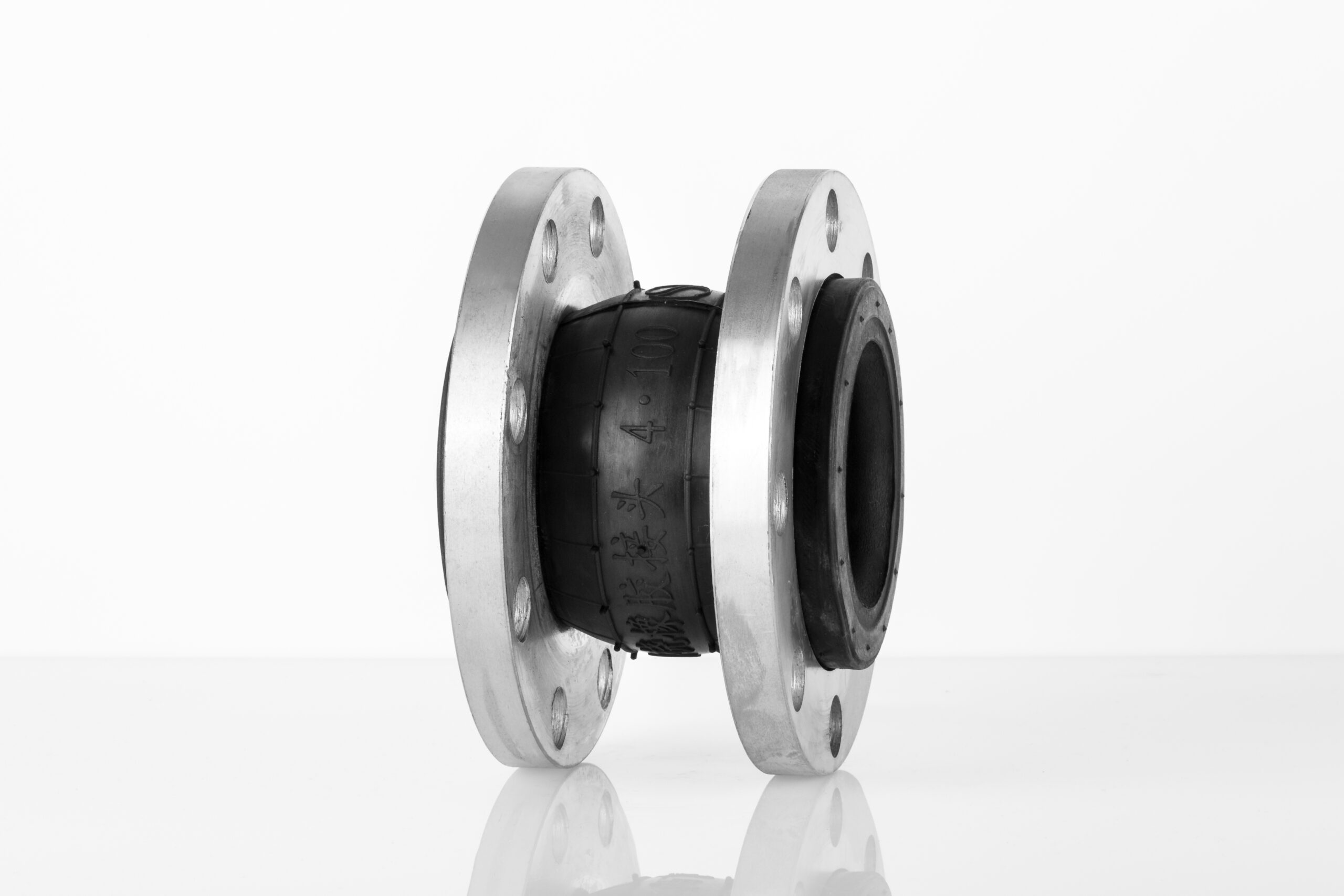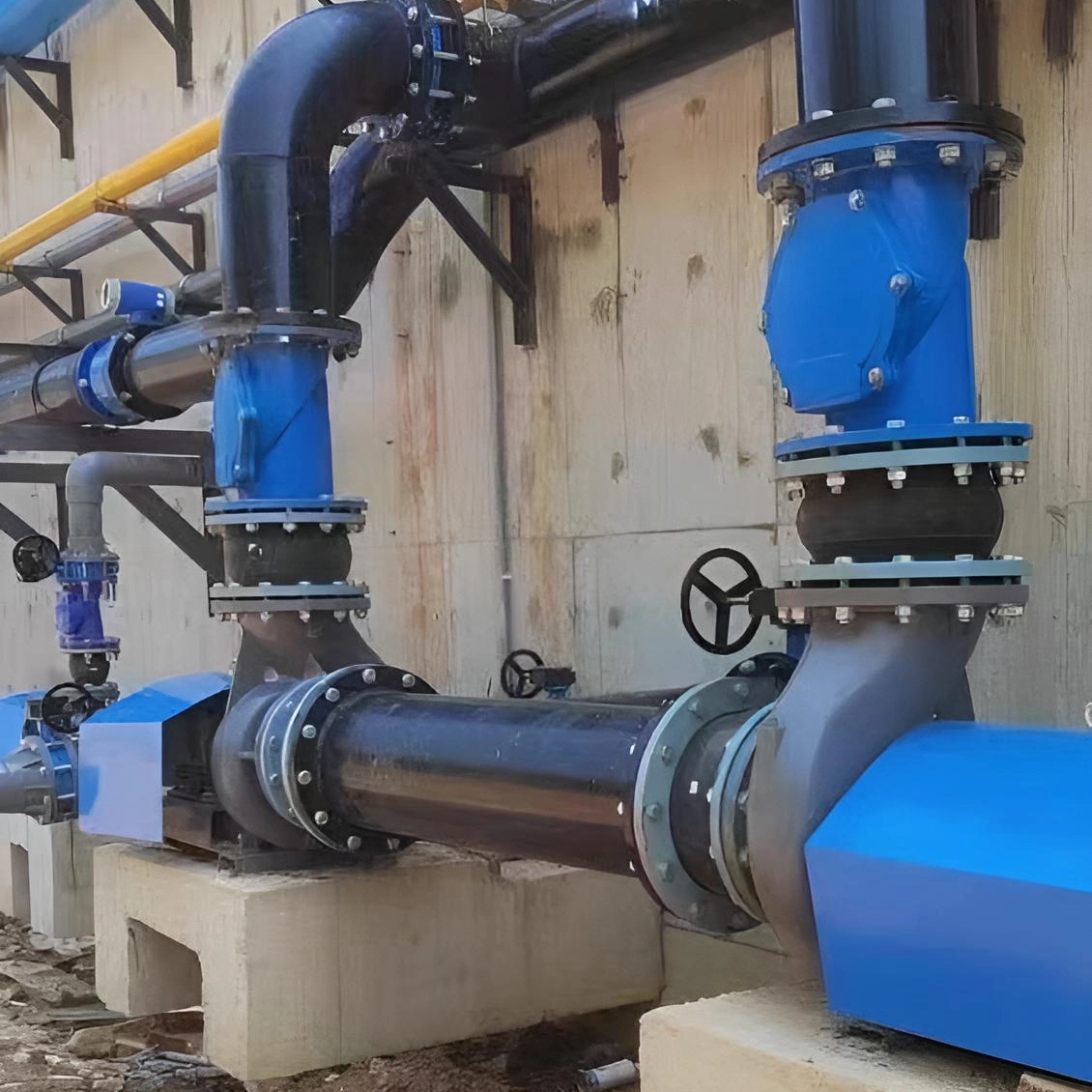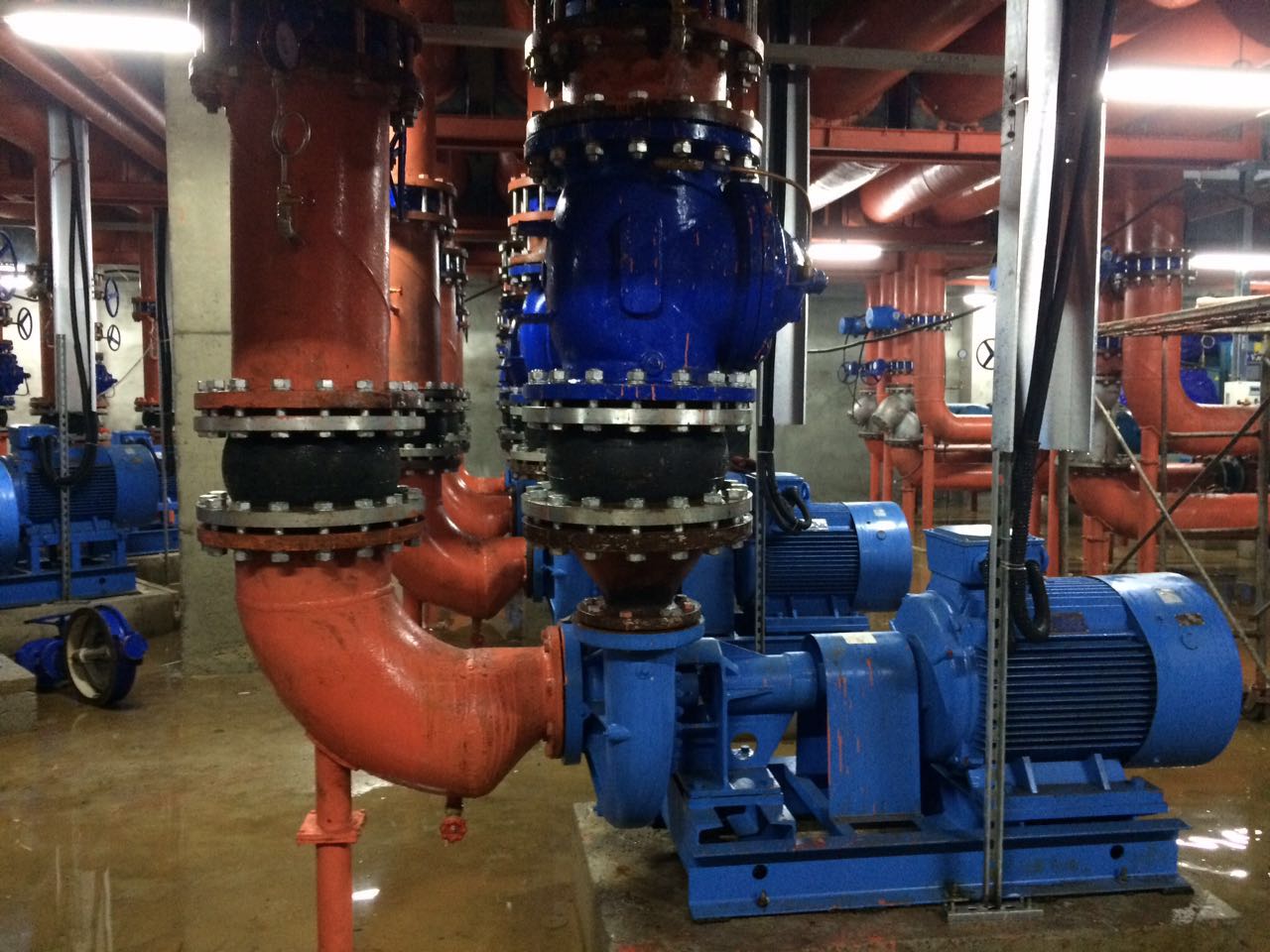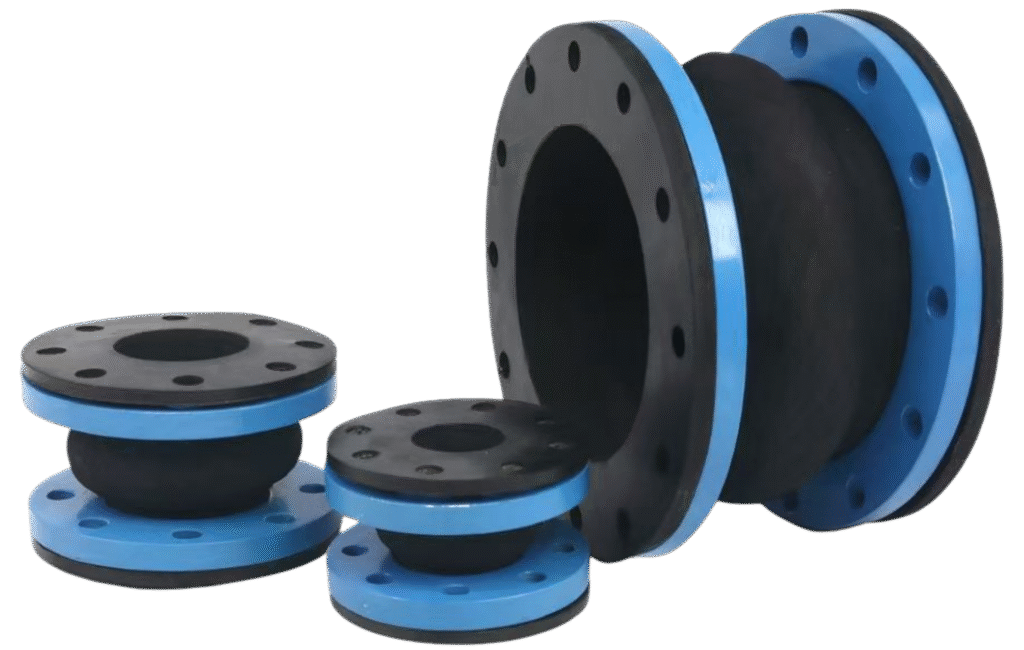Applications and Importance of Rubber Expansion Joints in Equipment Manufacturing
In the equipment manufacturing industry, rubber expansion joints are key components for connecting piping systems to machines. Their primary functions include absorbing mechanical vibration, compensating for thermal expansion and contraction, eliminating installation stress, reducing noise, and protecting flange interfaces of critical equipment.
Manufacturers of pumps, fans, chillers, compressors, and heat exchangers often incorporate rubber expansion joints at outlet or inlet pipe connections during the design phase. These joints are made of elastic rubber (such as EPDM, NBR, or Viton) reinforced with nylon fabric or steel wire layers, and are adaptable to various pressure, temperature, and media conditions.
Using rubber expansion joints significantly reduces issues like fatigue failure, resonance, and connection loosening during operation, offering equipment manufacturers a more reliable and durable solution.



Equipment manufacturers often face the following challenges:
mechanical vibration and noise during equipment startup and operation, displacement at connection points caused by thermal expansion and contraction, and pressure fluctuations within the piping system. Rubber expansion joints, with their highly elastic materials and flexible structure, effectively mitigate these issues, enhancing the overall safety, stability, and service life of the equipment.
Why should equipment manufacturers consider rubber expansion joints during the design phase?
Rubber joints absorb axial, lateral, and angular displacements. They isolate vibration and thermal stress generated by pumps or compressors, enhancing the system’s flexible design and structural integrity.
How do rubber expansion joints extend the service life of equipment?
They absorb dynamic loads and pressure pulsations, reducing the risk of metal fatigue failure. Additionally, they buffer impact during startup or shutdown, protecting critical parts like impellers, shaft seals, and couplings.
What types of equipment typically use rubber expansion joints?
Typical examples include: multistage centrifugal pumps, centrifugal fans, chillers, vacuum pumps, plate heat exchangers, air compressors, and boiler inlet/outlet systems—all requiring vibration control for safe and efficient operation.
Are rubber expansion joints suitable for high-temperature or corrosive environments?
Yes. Materials like high-temperature EPDM (up to 130°C), oil-resistant NBR, or PTFE-lined rubber expansion joints are used in chemical plants or process equipment to handle acids, alkalis, or solvent media.
Do export-oriented equipment require standard-compliant expansion joints?
Absolutely. Exported systems often require compliance with ANSI, DIN, JIS, or BS standards. Parameters like flange drilling, nominal pressure, overall length, and materials must align with international certification and installation guidelines.
Do rubber joints help improve system energy efficiency?
Yes. Their elastic structure suppresses water hammer and avoids resonant frequency overlap, leading to smoother system performance and lower energy consumption. They also reduce maintenance, lowering lifecycle costs (LCC).


